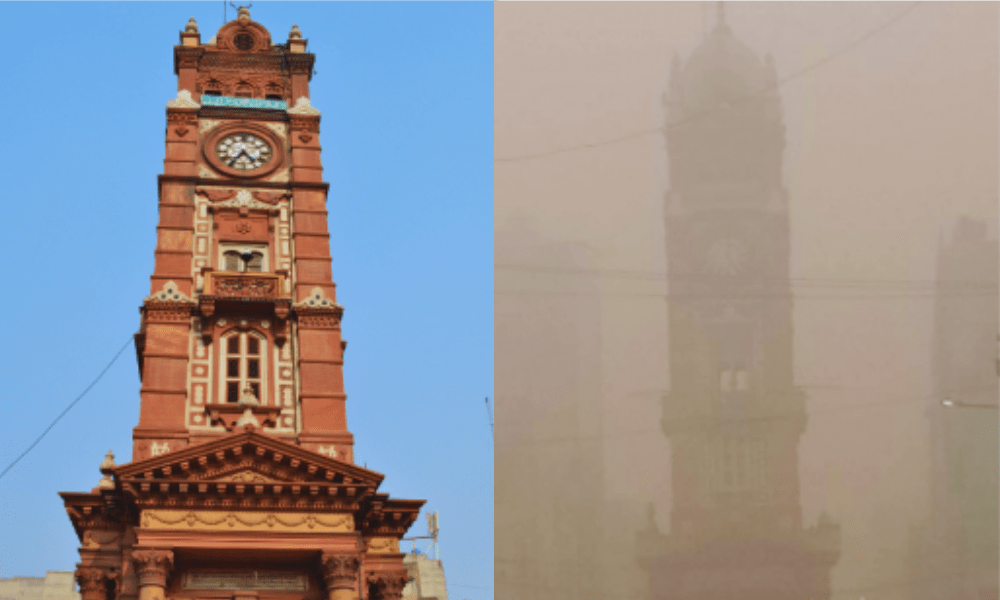The air quality in Lahore, Pakistan, has become a significant health threat, reaching hazardous levels that are damaging the lives of its residents. With the annual smog season intensifying, hospitals are overwhelmed, schools are forced to close, and households invest in costly air purifiers to keep their families safe. This air pollution crisis has escalated, and it is becoming increasingly difficult for people to breathe without relying on technology to filter the toxic air around them. The situation in Lahore’s streets and homes illustrates the severe health consequences of prolonged exposure to dangerous air quality.
Lahore: Leading the World in Poor Air Quality
In recent weeks, Lahore’s air quality index (AQI) has soared to alarming levels, surpassing 1,200 in some neighborhoods. The AQI measures pollutants such as fine particles (PM2.5), larger particles (PM10), nitrogen dioxide (NO2), and ozone (O3), with levels higher than 300 considered hazardous. The global standard for AQI is in the range of 0-50 (good), but Lahore’s AQI is routinely classified as “unhealthy” and sometimes even “hazardous” by global environmental monitoring bodies.
The city’s air pollution has become a year-round issue, with smog intensifying every autumn. Residents are now accustomed to poor air quality, but each year, the situation seems to worsen. Health problems related to the smog range from respiratory and heart diseases to psychological effects, causing a massive strain on the city’s healthcare system.
Health Impact of Lahore’s Smog: A Public Crisis
Asthmatic individuals and those with pre-existing respiratory conditions are particularly vulnerable to the effects of Lahore’s smog. Natasha Sohail, a 29-year-old A-Level teacher in Lahore, shared her personal experience of battling the worsening air quality. She suffers from asthma and has relied on anti-wheezing medication and inhalers for years. The situation has only worsened, and she often experiences vertigo attacks and fever due to prolonged exposure to toxic air. “It’s criminal what is happening here,” Sohail remarked, frustrated by the lack of effective measures from the Punjab government.
The increased number of respiratory and heart disease cases has overwhelmed hospitals in Lahore. Dr. Ashraf Nizami, president of the Pakistan Medical Association’s Lahore chapter, reported that hospitals are overcrowded with patients seeking treatment for conditions worsened by smog. He also emphasized the psychological toll the pollution has taken on the population, which often goes unnoticed in public discourse.
Government’s Efforts to Tackle the Smog Crisis
In response to the worsening air quality, the provincial government of Punjab has implemented several measures aimed at combating smog. These initiatives have included banning certain activities that contribute to pollution, such as motorized rickshaws and barbecuing food without filters. Additionally, the government has distributed subsidized super-seeders to farmers to reduce the burning of rice stubble, a major contributor to the seasonal pollution.
Despite these efforts, experts argue that they are insufficient to address the underlying issues. Many critics point out that smog is not only caused by agriculture but also by industries and the transportation sector. The burning of fuel in outdated vehicles and factories continues to contribute significantly to Lahore’s toxic air, and tougher regulations are necessary to curb emissions from these sources.
The Role of Air Purifiers in Lahore’s Survival Mode
As air quality continues to deteriorate, residents have taken matters into their own hands. Aliya Khan, a 37-year-old mother of two young boys, invested in four imported air purifiers to protect her family from the smog. However, this solution is not without its challenges. Khan noted that although the air purifiers help, they are only effective if the home is tightly sealed to prevent polluted air from entering. The constant need to replace filters and the high cost of maintaining air purifiers has added financial strain to families already struggling with the health crisis.
The demand for air purifiers has also fueled a thriving market for local manufacturers. Hassan Zaidi, a 37-year-old entrepreneur, started building his own air purifiers in 2019 after his daughter developed a cough due to poor air quality. Zaidi’s air purifiers, which cost Rs 25,000, are reportedly more efficient and affordable than imported models. His products are now in high demand, with orders coming in from schools and households across Lahore.
The Larger Environmental Crisis: A Global and Local Challenge
While Lahore’s air quality is largely affected by local sources of pollution, up to 30% of the smog is attributed to pollution from neighboring India. Stubble burning in India’s agricultural sector contributes significantly to air pollution in the Indo-Gangetic Plain, an interconnected region that impacts the air quality of both countries. The air quality issues in Lahore are thus not confined to the city but are part of a broader regional environmental crisis.
Challenges in Addressing Lahore’s Smog: Government and Public Response
The government has faced significant criticism for its handling of the smog crisis. Despite the introduction of a smog action plan, residents and experts argue that the measures taken so far have been insufficient. Dr. Parvez Hassan, a senior advocate and environmental law expert, expressed dissatisfaction with the government’s focus on dismantling brick kilns rather than addressing the larger industrial and vehicular emissions that contribute more significantly to air pollution. According to Dr. Hassan, the government needs to provide more support to industries, like brick kilns, to adopt cleaner technologies.
Furthermore, experts agree that improving the quality of fuel and upgrading vehicle engines to meet international standards should be prioritized to tackle Lahore’s smog problem. The city has a significant number of old vehicles that release harmful emissions, and replacing these with cleaner vehicles is critical for reducing pollution.
Conclusion: A Call for Urgent Action
Lahore’s smog crisis is not only a public health emergency but also an environmental catastrophe that requires urgent, long-term solutions. While some measures have been taken, they are often too little, too late. Effective enforcement of pollution controls, widespread adoption of cleaner technologies, and a coordinated regional approach with neighboring India are all essential to combating this ongoing crisis. If Lahore’s air quality continues to worsen, the city risks further health and economic consequences.
FAQs:
1. What is the current air quality situation in Lahore? Lahore is currently facing hazardous air quality levels, with the AQI exceeding 1,200 in some areas. This is leading to a rise in respiratory and heart diseases, with hospitals overwhelmed by patients.
2. What are the main causes of Lahore’s air pollution? The main sources of pollution in Lahore include vehicle emissions, industrial pollution, stubble burning, and outdated brick kiln technologies. These combined factors contribute significantly to the city’s hazardous air quality.
3. How can residents protect themselves from Lahore’s smog? Many residents are using air purifiers to filter the air in their homes. However, this is not always a perfect solution, as the effectiveness of purifiers depends on the tight sealing of homes and regular maintenance of filters.
4. What measures has the government taken to address Lahore’s smog? The government has banned certain activities like the use of motorized rickshaws and barbecuing without filters, and it has distributed subsidized equipment to farmers to reduce stubble burning. However, critics argue that more drastic measures are needed.
5. How can Lahore’s air quality be improved in the long term? Long-term solutions include reducing emissions from vehicles and industries, improving fuel quality, upgrading vehicle engines, and investing in mass transit systems. Additionally, regional cooperation with neighboring India is crucial to tackle cross-border pollution.



